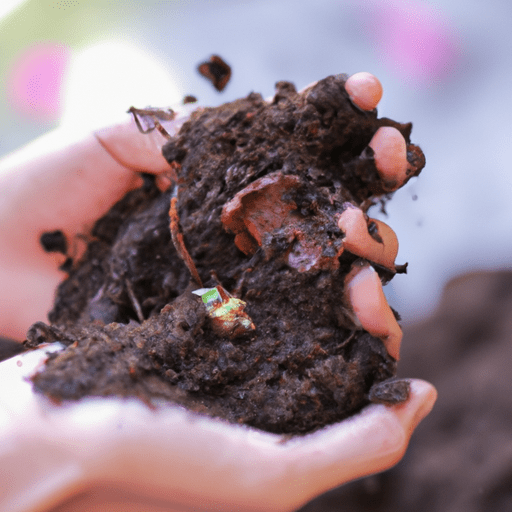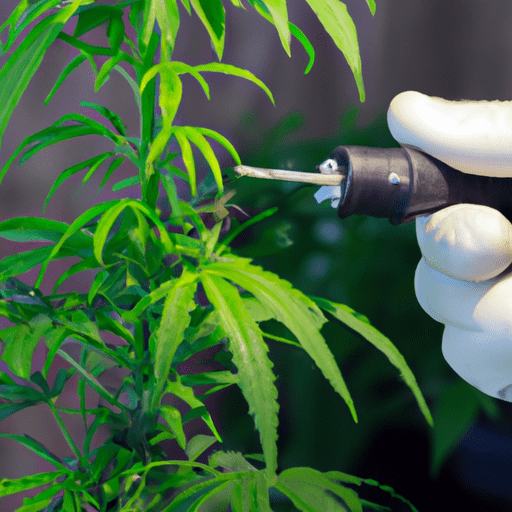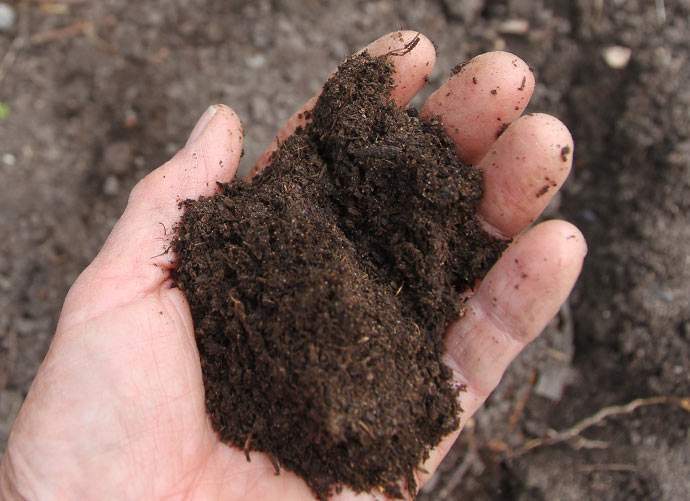-
Table of Contents
“Grow Healthy Plants with Living Soil – Unlock Nature’s Secrets!”
Introduction
Living soil is a type of soil that is full of beneficial microorganisms and organic matter. It is a great way to create a healthy and sustainable environment for your plants. Living soil is not only beneficial for your plants, but it also helps to improve the quality of the soil in your garden. In this guide, we will discuss how to make living soil and the benefits of using it. We will also discuss the different types of living soil and how to maintain it. By the end of this guide, you will have a better understanding of how to create and maintain living soil for your garden.
How to Create a Living Soil Ecosystem for Maximum Plant Health
Creating a living soil ecosystem is essential for achieving maximum plant health. Living soil is a complex, self-sustaining environment that provides plants with the nutrients they need to thrive. It is composed of a variety of organisms, including bacteria, fungi, and other microorganisms, as well as organic matter. By creating a living soil ecosystem, gardeners can ensure that their plants receive the best possible care.
The first step in creating a living soil ecosystem is to add organic matter. Organic matter is essential for providing plants with the nutrients they need to grow. It also helps to improve soil structure, which allows for better water and air circulation. Compost, manure, and mulch are all excellent sources of organic matter.
The next step is to introduce beneficial microorganisms. These organisms help to break down organic matter, making it easier for plants to absorb the nutrients they need. They also help to suppress disease-causing organisms, which can be detrimental to plant health. Compost tea, which is made by steeping compost in water, is an excellent way to introduce beneficial microorganisms into the soil.
The third step is to add amendments. Amendments are materials that are added to the soil to improve its structure and fertility. Common amendments include lime, gypsum, and rock dust. These materials help to improve the soil’s ability to hold water and nutrients, which is essential for healthy plant growth.
Finally, it is important to maintain a healthy soil ecosystem. This can be done by regularly adding organic matter, introducing beneficial microorganisms, and adding amendments. It is also important to avoid over-tilling the soil, as this can disrupt the delicate balance of the ecosystem.
By following these steps, gardeners can create a living soil ecosystem that will provide their plants with the best possible care. This will ensure that their plants are healthy and productive, and will help to ensure a successful harvest.
The Benefits of Using Living Soil for Gardening
Living soil is a type of soil that is composed of a variety of organic materials, such as compost, manure, and other natural substances. It is a type of soil that is alive with beneficial microorganisms, fungi, and bacteria. This type of soil is becoming increasingly popular among gardeners due to its many benefits.
One of the main benefits of using living soil for gardening is that it helps to improve the soil structure. Living soil is full of organic matter, which helps to improve the soil’s ability to hold water and nutrients. This helps to ensure that plants have access to the water and nutrients they need to grow and thrive. Additionally, the organic matter in living soil helps to improve the soil’s ability to absorb and retain moisture, which helps to reduce the need for frequent watering.
Another benefit of using living soil for gardening is that it helps to improve the soil’s fertility. The organic matter in living soil helps to provide essential nutrients to plants, such as nitrogen, phosphorus, and potassium. This helps to ensure that plants have access to the nutrients they need to grow and thrive. Additionally, the beneficial microorganisms in living soil help to break down organic matter, which helps to release additional nutrients into the soil.
Finally, using living soil for gardening helps to improve the soil’s ability to resist pests and diseases. The beneficial microorganisms in living soil help to create an environment that is inhospitable to pests and diseases. This helps to reduce the need for chemical pesticides and fertilizers, which can be harmful to the environment.
Overall, using living soil for gardening has many benefits. It helps to improve the soil structure, fertility, and resistance to pests and diseases. Additionally, it helps to reduce the need for chemical pesticides and fertilizers, which can be harmful to the environment. For these reasons, living soil is becoming increasingly popular among gardeners.
How to Make Your Own Living Soil at Home
Living soil is a type of soil that is full of beneficial microorganisms, fungi, and bacteria. It is a great way to grow healthy plants and vegetables in your home garden. Making your own living soil at home is a simple process that requires a few basic ingredients.
First, you will need to gather some organic matter. This can include compost, manure, peat moss, and other organic materials. You will also need to add some soil amendments such as lime, gypsum, and rock dust. These will help to balance the pH of the soil and provide essential nutrients for the plants.
Next, you will need to mix the ingredients together. You can use a shovel or a tiller to mix the ingredients together. Make sure to mix the ingredients thoroughly so that all of the ingredients are evenly distributed.
Once the ingredients are mixed together, you will need to add water. The amount of water you add will depend on the type of soil you are using. If you are using a sandy soil, you will need to add more water than if you are using a clay soil.
Once the soil is moistened, you will need to add some beneficial microorganisms. These can include earthworms, mycorrhizal fungi, and beneficial bacteria. These organisms will help to break down the organic matter and provide nutrients for the plants.
Finally, you will need to cover the soil with mulch. This will help to keep the soil moist and provide protection from the elements. You can use straw, wood chips, or other organic materials for this purpose.
Making your own living soil at home is a simple process that can provide you with healthy plants and vegetables. With the right ingredients and a little bit of effort, you can create a thriving garden in your own backyard.
The Different Types of Living Soil and Their Benefits
Living soil is a type of soil that is full of beneficial microorganisms, fungi, and bacteria. It is a type of soil that is alive and teeming with life. Living soil is a key component of sustainable and organic gardening and farming. It is essential for healthy plant growth and can help to reduce the need for chemical fertilizers and pesticides.
There are several different types of living soil, each with its own unique benefits.
The first type of living soil is compost. Compost is made up of organic matter such as leaves, grass clippings, and food scraps that have been broken down by microorganisms. Compost is a great source of nutrients for plants and helps to improve soil structure and fertility. It also helps to retain moisture and reduce the need for chemical fertilizers.
The second type of living soil is vermicompost. Vermicompost is made up of organic matter that has been broken down by worms. It is a great source of nutrients for plants and helps to improve soil structure and fertility. It also helps to retain moisture and reduce the need for chemical fertilizers.
The third type of living soil is biochar. Biochar is a type of charcoal that is made from organic matter such as wood, straw, and manure. It helps to improve soil structure and fertility and can help to reduce the need for chemical fertilizers. It also helps to retain moisture and can help to reduce the amount of water needed for irrigation.
The fourth type of living soil is mycorrhizal fungi. Mycorrhizal fungi are beneficial fungi that form a symbiotic relationship with plants. They help to improve soil structure and fertility and can help to reduce the need for chemical fertilizers. They also help to retain moisture and can help to reduce the amount of water needed for irrigation.
Living soil is an essential component of sustainable and organic gardening and farming. It is full of beneficial microorganisms, fungi, and bacteria that help to improve soil structure and fertility. It also helps to retain moisture and reduce the need for chemical fertilizers and pesticides. Each type of living soil has its own unique benefits and can help to create a healthy and productive garden or farm.
Tips for Maintaining a Healthy Living Soil Environment
1. Test the soil regularly: Regularly testing the soil is essential to maintaining a healthy living soil environment. Testing the soil will help you determine the pH level, nutrient levels, and other important factors that can affect the health of the soil.
2. Add organic matter: Adding organic matter to the soil is a great way to improve its structure and fertility. Organic matter can come in the form of compost, manure, or other organic materials.
3. Use cover crops: Cover crops are plants that are grown to protect the soil from erosion and to add organic matter to the soil. Cover crops can also help to improve the soil’s structure and fertility.
4. Mulch: Mulching is a great way to protect the soil from erosion and to help retain moisture. Mulch can also help to improve the soil’s structure and fertility.
5. Avoid over-tilling: Over-tilling the soil can disrupt the soil’s structure and can lead to compaction. It is important to avoid over-tilling the soil in order to maintain a healthy living soil environment.
6. Avoid chemical fertilizers: Chemical fertilizers can disrupt the soil’s natural balance and can lead to nutrient imbalances. It is important to avoid using chemical fertilizers in order to maintain a healthy living soil environment.
7. Water wisely: Watering the soil correctly is essential to maintaining a healthy living soil environment. It is important to water the soil deeply and evenly in order to ensure that the soil is properly hydrated.
8. Rotate crops: Rotating crops is a great way to reduce the risk of disease and pest infestations. Rotating crops can also help to improve the soil’s structure and fertility.



